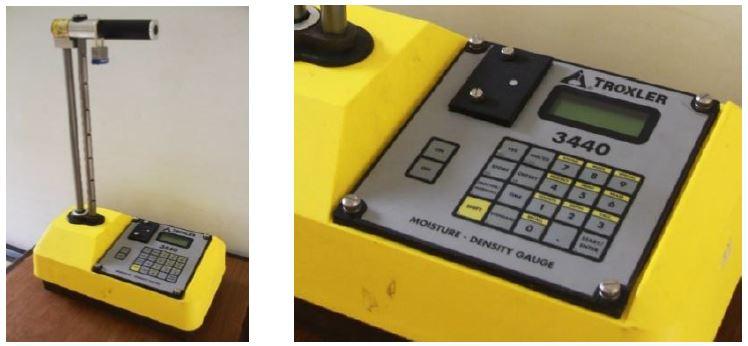The Department of Science and Technology-Philippine Nuclear Research Institute (DOST-PNRI) is searching for a missing piece of sensitive equipment. This search is urgent, as the device contains materials that emit high levels of ionizing radioactivity.
What is this “box of radioactivity,” exactly?
Approximately one month ago, a Troxler Model 3440 moisture density gauge was reported missing by an industrial firm in Bigte, Norzagaray, Bulacan. It was last sighted around the area of the Metropolitan Waterworks Sewerage System (MWSS) storage facility located in the town.
Archaeologists, engineers, miners, and other professionals use moisture density gauges to measure the density and composition of ground materials before conducting major operations. These materials include soil, concrete, and asphalt, as well as underground liquids. Moisture density gauges are particularly important to construction companies, as they help determine whether or not the soil in a specific area is well-suited for large-scale projects such as streets, highways, tunnels, and airport runways.
The missing moisture density gauge has a yellow body and an L-shaped handle. It measures about 60 cm (23.6 in) long, and weighs roughly 41 kg. It came inside an orange transport box measuring 30 x 14 x 17 inches. Both the transport box and the device bear a radiation symbol (see below).
Is the moisture density gauge dangerous?
As this device was designed for industrial use, it is fully shielded, and should be safe provided it remains closed. However, as it contains radioactive materials (cesium-137 and americium-241, according to the product specifications), it presents a major health risk to anyone exposed to its contents. Symptoms of radiation exposure include burns, headaches, and vomiting. Prolonged exposure to radioactivity may lead to the development of cancer and other serious health conditions.
Should you happen to come across this device — or any equipment with the radiation symbol seen above, for that matter — DO NOT OPEN OR TAMPER WITH THE UNIT OR ITS HOUSING in order to avoid direct exposure to radioactivity.
Doctors, nurses, and other medical practitioners should also watch out for patients exhibiting symptoms of exposure to radioactivity.
Why would anyone steal such a hazardous device?
This is hardly the first case of a lost or stolen moisture density gauge. Just last year, the same models went missing from construction companies in the U.S. states of Maryland and Arkansas.
It is likely that whoever is in possession of the missing device intends to take it apart and sell it as scrap metal. As such, DOST-PNRI advises scrap metal dealers and buyers of used metal items to be on the lookout for this device.
Some internet commenters expressed concerns about the possible weaponization of the box’s contents. However, this scenario is highly unlikely, as these devices are inadequate and inefficient sources of radioactive material for such purposes.
What should you do if you find it?
DOST-PNRI is the agency in charge of licensing and regulating the use of radioactive materials and equipment across relevant industries. The agency is currently working with the Philippine National Police and the Office of Civil Defense in finding and recovering the device.
Should you come across the equipment – especially if you touched it – please report to your nearest police station immediately and contact Mr. Teofilo V. Leonin Jr., DOST-PNRI’s Nuclear Regulatory Division Chief. You may reach him via landline (9208796 and 9296011 local 244) or mobile (0915-1946085). You may also email tvleonin@pnri.dost.gov.ph if you have any information about the whereabouts of this device.
References
- DOST-PNRI official press release
- http://www.troxlerlabs.com/products/details?prodid=44
- http://txktoday.com/arkansas-news/device-containing-radioactive-material-stolen-hot-springs/
- https://www.cbc.ca/news/canada/nova-scotia/radioactive-gauge-stolen-in-cape-breton-1.1231703
- https://www.washingtonpost.com/local/public-safety/radioactive-tool-stolen-from-prince-georges-county-construction-site/2017/06/29/500d79e6-5d0b-11e7-8136-aae7072f5235_story.html
- https://www.wired.com/2007/07/anyone-can-buil/
Author: Mikael Angelo Francisco
Bitten by the science writing bug, Mikael has years of writing and editorial experience under his belt. As the editor-in-chief of FlipScience, Mikael has sworn to help make science more fun and interesting for geeky readers and casual audiences alike.









